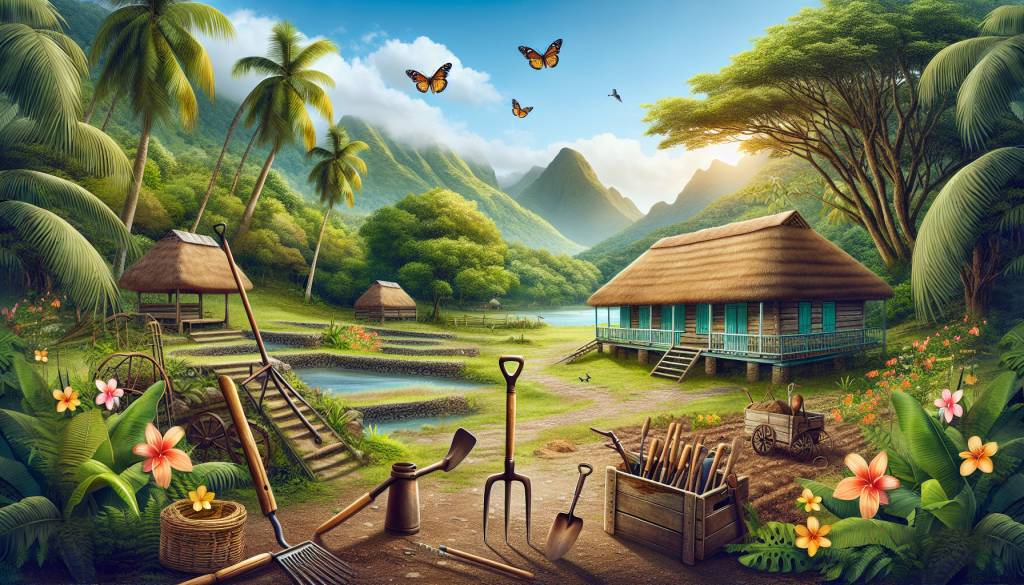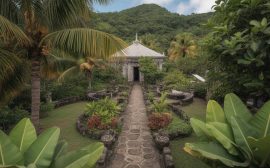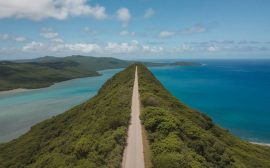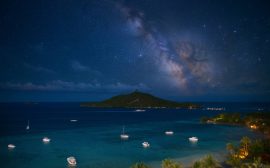Exploring the Roots of Creole Culture at La Savane des Esclaves
Martinique, a gem in the tapestry of the Caribbean islands, is not only renowned for its breathtaking beaches and lush, tropical landscapes, but also for its rich cultural heritage. Nestled in the heart of this vibrant island is La Savane des Esclaves, an open-air museum and historical site that offers visitors a unique and immersive experience into the poignant history and enduring legacy of the island’s ancestors.
The Historical Significance of La Savane des Esclaves
La Savane des Esclaves serves as a crucial portal to the past, providing an in-depth look at the lives of the enslaved people who were brought to Martinique during the transatlantic slave trade. This historical attraction spans over two hectares of land in the picturesque town of Trois-Îlets, and has been meticulously crafted to recreate the living conditions and community structures of the island’s early inhabitants.
The site was established by Gilbert Larose, a dedicated historian and cultural preservationist, with the intent to educate both locals and tourists about the harsh realities of slavery and the resilience of those who suffered through it. The attention to detail and commitment to authenticity make La Savane des Esclaves a poignant testament to a tragic chapter in human history.
What to Expect When You Visit
Upon entering La Savane des Esclaves, visitors are transported back in time to the 19th century, walking among replica huts and cabins that illustrate the daily lives of the enslaved people and their descendants post-emancipation. These structures are made from traditional materials like wood, sugarcane leaves, and clay, all constructed using period-appropriate techniques.
The exhibition includes:
- Kitchen gardens that showcase the subsistence farming practices and the variety of crops grown by the people,
- Medicinal herb gardens that offer insights into the natural remedies used for healthcare,
- A Creole hut adorned with period furniture and household items, providing a glimpse into domestic life,
- Informational plaques and guided tours that offer stories, facts, and narratives about the slavery era and its impact on Martinique’s society and culture.
Understanding Creole Heritage
La Savane des Esclaves also places a strong emphasis on the evolution of Creole culture, which emerged as an amalgamation of African, European, and Indigenous influences. This cultural blend is evident in the architecture, language, and customs of Martinique, and is celebrated at the site.
Traditional Creole houses, with their distinctive and colorful aesthetic, provide an insight into the adaptability and ingenuity of the island’s inhabitants. The houses are designed to be naturally ventilated and hurricane-resistant, a testament to the harmonious relationship between traditional engineering and the tropical environment.
Educational Outreach and Cultural Programs
La Savane des Esclaves goes beyond being a mere tourist attraction by engaging in extensive educational outreach. It aims to keep the memories and lessons of the past alive for future generations through school visits, cultural programs, and interactive workshops that focus on traditional crafts, Creole language, and storytelling techniques that have been passed down through the ages.
The site also hosts cultural festivals and events throughout the year, allowing visitors to experience the vibrant music, dance, and culinary traditions that make Martinique’s heritage so rich and diverse. These events are often lively affairs, providing a sense of community and celebration that is integral to Creole life.
The Impact of La Savane des Esclaves on Martinique’s Tourism
La Savane des Esclaves is not only a cornerstone of cultural preservation but also an important player in Martinique’s tourism industry. By providing an authentic and educational experience, it attracts those who seek a deeper understanding of the island’s historical context and current cultural dynamics. It stands out as a must-visit for anyone interested in the history of the Caribbean, the African diaspora, and the development of Creole societies.
The museum also contributes to the local economy by creating jobs, supporting local artisans, and fostering a more sustainable form of tourism that respects and conserves Martinique’s natural and cultural resources. Its focus on education and preservation helps to ensure that the profits from tourism are invested back into the community, enriching the lives of Martinicans and preserving the island’s heritage for generations to come.
Planning Your Visit to La Savane des Esclaves
When planning a visit to La Savane des Esclaves, it is advisable to set aside at least half a day to fully immerse oneself in the experience. The site is open all year round, with guided tours available in multiple languages. It is recommended to wear comfortable walking shoes and bring sun protection, as much of the exploration occurs outdoors.
For those looking to enhance their visit, local craft shops and eateries are nearby, offering the chance to support the community while enjoying traditional Martinique cuisines and artisan souvenirs. This makes a trip to La Savane des Esclaves not only an educational journey but also an opportunity to engage with the local economy and its people.
Final Thoughts on La Savane des Esclaves
La Savane des Esclaves stands as a powerful tribute to the island of Martinique’s complex past and vibrant present. By fostering an understanding of the painful history of slavery and celebrating the resilience and creativity of the Creole culture, the site offers a unique and enriching experience.
For those visiting Martinique, La Savane des Esclaves is an essential destination that promises both a sobering reflection on humanity’s history and an uplifting perspective on the power of cultural identity and perseverance. It’s an immersive experience that remains long in the memory, prompting reflection, respect, and, ultimately, a deeper connection to the island and its people.




